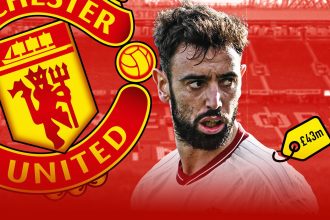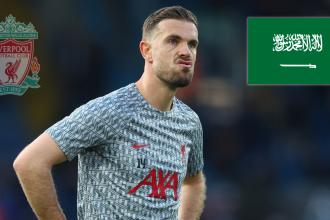The midfielder has run into a familiar problem of struggling to weave his usual magic for the Three Lions at Euro 2024
England were off to a winning start in a European Championship, but there was an overall sense of disappointment after the game and a focus on Phil Foden. We're not talking about the 1-0 victory over Serbia on Sunday, however, but when England beat Croatia at the last Euros.
Foden's quiet and at times sloppy display was one of the main talking points in Gelsenkirchen after he was billed as one of the players to watch at Euro 2024 following a blistering campaign with Manchester City. It was a similar story after England's unconvincing 1-0 win over Croatia at Wembley three years ago, when Foden hit the post before being the first player to be substituted by Gareth Southgate. Foden had also been tipped to light up that tournament after scoring nine goals and providing five assists for City in the campaign that preceded it, but he made just three appearances in England's run to the final.
The circumstances then were different to now, but the outcome was the same: Foden flattering to deceive on the international stage despite a stunning season with City. So why can't he do for Southgate what he has been doing for Pep Guardiola for years? And is the Catalan coach to blame?
Getty ImagesSignificant drop-off
Foden shrinking when putting on an England shirt is nothing new. He has played 35 games since making his Three Lions debut in 2020, scoring four goals while setting up eight. That's an average of 0.34 goal involvements every game. By contrast, he has played 270 games for City and contributed to 140 goals, an average of 0.52 per match. And in the last season, he contributed to 39 goals in 54 games, an average of 0.72.
Even considering the big difference in overall quality between City and England and the gulf in coaching ability between Guardiola and Southgate, it's a significant drop-off. Especially when putting Foden's numbers next to those of his fellow midfielders at City, who tend to replicate their club form at international level.
Kevin De Bruyne has an average of 0.75 goal involvements per game for Belgium compared to 0.71 for City; Bernardo Silva's average is 0.44 for Portugal and 0.37 for City; Rodri's is 0.1 for Spain and 0.22 for City; Erling Haaland's average is 1.1 for both Norway and City; Jack Grealish's England average is 0.28, for City it's 0.26.
Julian Alvarez is 0.52 for City but 0.25 for Argentina, also a big drop-off, with the important caveat that he starred at the 2022 World Cup and was his team's second-top scorer behind Lionel Messi.
Foden's former City team-mates also had similar trajectories at club and international level. Ilkay Gundogan's average for City was 0.32, for Germany it's 0.33. Raheem Sterling's was 0.6 for City, only marginally higher than his 0.57 for England.
AdvertisementGetty Struggling out wide
A lot has been made of the fact that Foden tends to play out on the left wing for England while last season with City he enjoyed more freedom, operating as a No.10 when De Bruyne was unavailable or playing off the right. In a number of games, he also started out on the left, the position he used to play in his first four seasons after breaking into the first team.
Indeed, Southgate gave a sarcastic response when asked last year why he didn't play Foden more centrally for England. "He doesn't play there for his club, so presumably there's a reason for that," he said. "It depends on the level of the game really. You'd have to speak with Pep Guardiola, the best coach in the world, who plays him from wide."
The big difference between City and England, however, is Guardiola encourages his players to move all over the pitch and rotate with their team-mates, confusing the opposition and opening up more space for each other. Positions are much more rigid in Southgate's side, even if the manager would not like to admit it.
Getty Lacking freedom
Southgate said a month before the tournament "the key with Phil is where he ends up, not his starting position." He added: "It's where these players arrive and where they are allowed to drift to. We never pin these forwards to the touchline. There is this freedom."
But that freedom was not on display in Gelsenkirchen. With Luke Shaw still not fit and Kieran Trippier forced to play at left-back on his weaker foot, England did nearly all of their attacking down the right flank.
Bukayo Saka mostly stuck to that, while Kyle Walker, who is encouraged to come into midfield more at City, stayed close behind him, doubling England's threat down that side.
That combination provided the only goal of the game for Jude Bellingham, but it also meant that Foden could not get into the space in which he thrives the most, coming off the right wing on the half-turn and cutting onto his deadly left foot.
getty imagesMissing Shaw
Of the 27 goals Foden scored in all competitions last season for City, just three came while attacking from the left. Ten came while attacking from the right, with 13 coming from attacks through the middle or arriving in the middle of the box. It is unsurprising, therefore, that he was not able to cause as much damage operating in a different sphere.
Foden's capacity to drift inside was further reduced due to a lack of support from Trippier, who was not able to get forward with the same regularity as Josko Gvardiol did for City in his spectacular end to the season.
The absence of Shaw, the only natural left-back in the squad Southgate took to Germany, has badly affected Foden, and the Manchester United defender looks unlikely to start against Denmark on Thursday, which does not bode well for Foden's prospects against Kasper Hjulmand's side.






